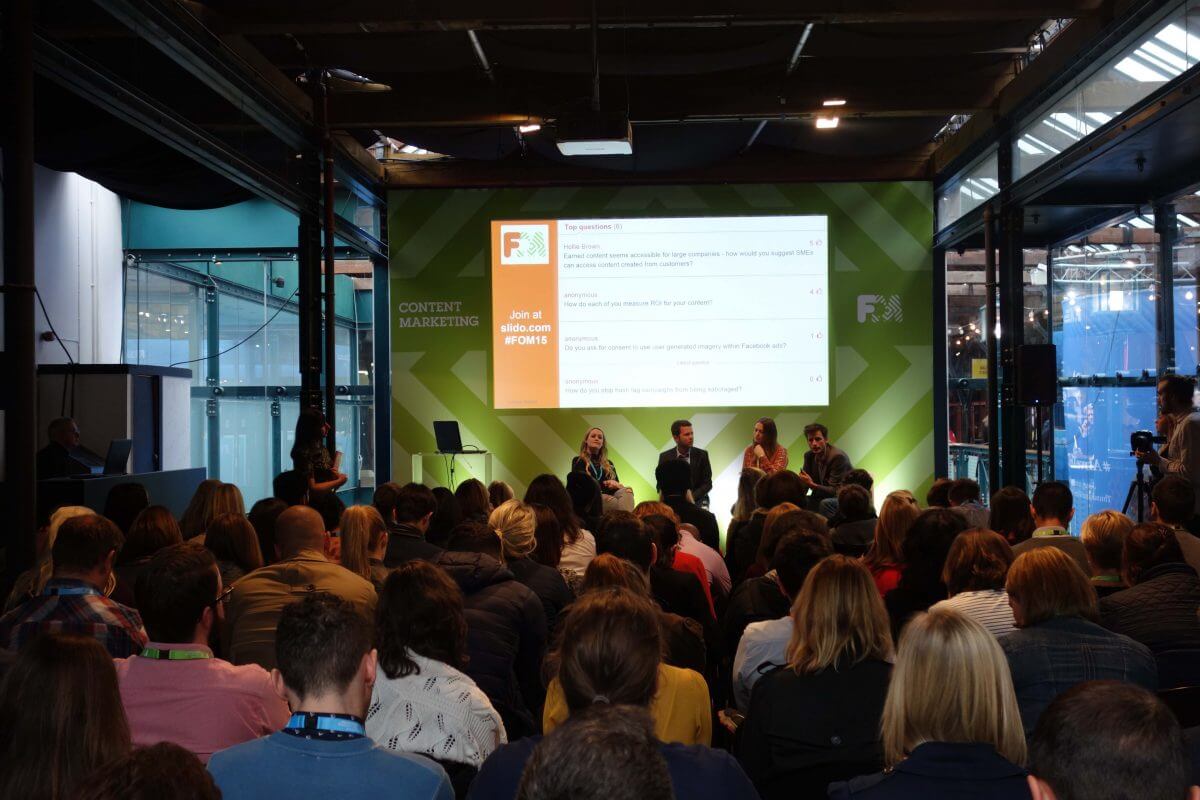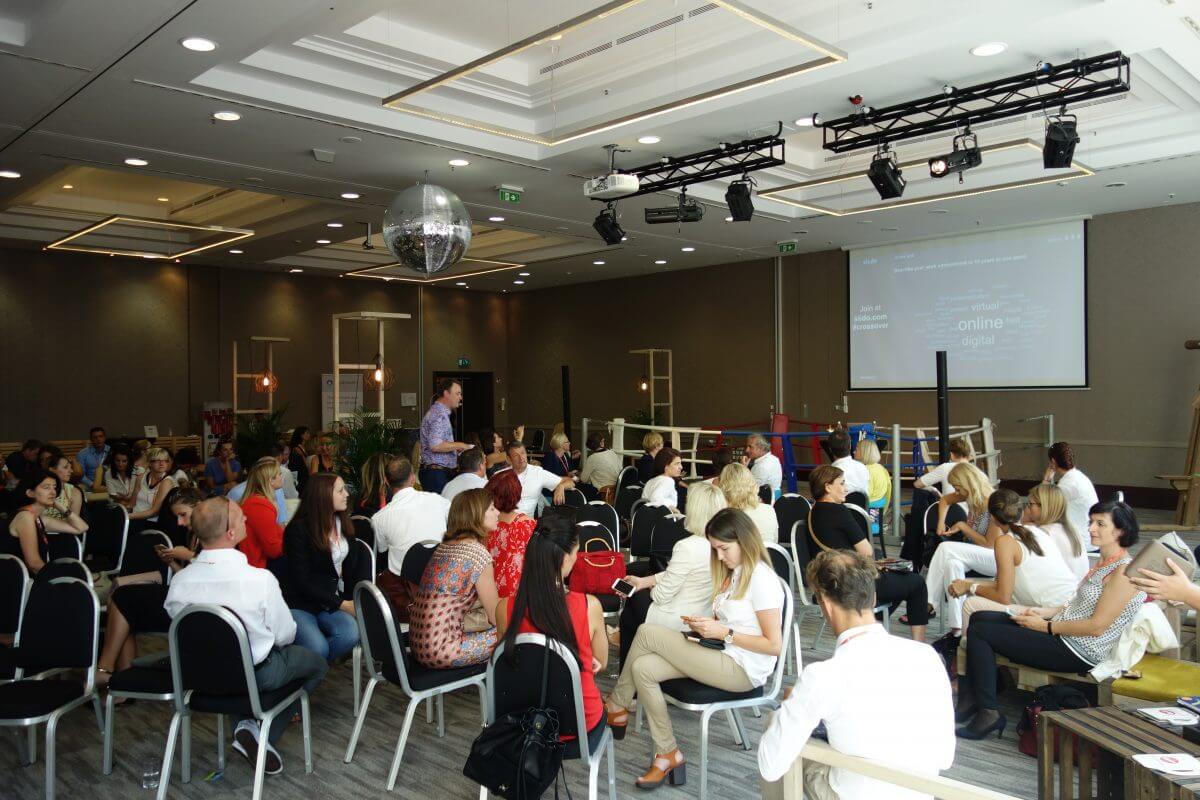Picture this scene: The presenter finishes their session, the moderator steps on stage and asks the audience: “Are there any questions?”
Tumbleweed rolls by as delegates shuffle nervously in their chairs. Eventually, the polite moderator fires one or two questions and the session comes to a rather anti-climactic end.
Sounds familiar?
A lack of questions from the audience is the biggest barrier when looking to create audience interaction at events.
As event organizers, it is our job to try to combat the fear of the Q&A and encourage our delegates to participate. Yet, this seems to be easier said than done.
So, why don’t participants want to participate in the discussion?
Hurdle #1: Fear of looking stupid
Think back to your school days. Asking questions often meant that you didn’t understand something. So, to avoid looking stupid in front of your peers, you’d rather not ask at all.
Sadly, many of us have brought this pattern into adulthood.
According to the National Institute of Mental Health, 74% of us are scared of public speaking. As a matter of fact, having to ask questions increases this anxiety.
Hence, rather than risking embarrassment, the attendees choose to remain silent. However, there are ways you can help ease your delegates’ fears and encourage interaction.
Pro Tips
Evaluate your space. Large rooms with a theatre setup discourage dialogue. The bigger the room, the fewer chances there are for intimacy or friendliness between participants and the speaker.
You can overcome the spatial limitations by creating a delegate-friendly atmosphere.
Eric de Groot elaborates on this point in this great video and demonstrates the power of facilitation by creating intimate conversations in a large hall:
Another effective solution is leveraging technology. Luckily, we live in a world where putting up your hand and speaking up is no longer the only way to get your voice heard.
Interaction technology has democratized the Q&A and panels. Anyone can participate – introverts, extroverts and everyone in between.
I’m an assertive introvert, I always have stuff to ask and contribute, much better to do it through an app
— Julia?️Mariani (@seedkeeper) September 22, 2016
Hurdle #2: Session formats not optimized for interaction
Most presentations at conferences are one-way monologues. You surely know what we’re talking about: the speaker delivers their carefully rehearsed performance to deliver a certain message to the audience. It is very much like telling a story.
And, of course, people usually don’t ask questions in the middle of someone’s story.

Pro Tips
While it might seem natural to wait for the speaker to finish their presentation, the chances are that the audience will be disengaged by the time Q&A comes up.
Experiment with the timing of the Q&A. For example, by opening up the floor for questions in the middle of a presentation, you will be able to draw people into the story. You will see a rise in audience interaction immediately.
Even better, you can ditch the traditional keynote and replace it with much more interactive fireside chats. These formats turn the whole session into a two-way dialogue.
Hurdle #3: Ineffective Q&A time
If you think about it, it’s not feasible to expect 300 participants to each ask a question during a ten minute Q&A session. Plus, allocating such a small amount of time to discussion usually means that a few vocal people will ask questions while the rest will just listen.
Even worse, what if the question that someone asks is irrelevant for the majority of the audience? It’s often a blind bet. A Q&A can be a waste of time if the questions aren’t useful to the entire room.

Pro Tips
Interaction technology can help you collect audience questions effectively. On top of that, you will get a clear overview of the popular topics as people are able to upvote the already submitted questions.
With this in mind, Chris Chapman, Head of Content at Festival of Marketing and the team used Slido to “maximize the effectiveness of the limited time available for audience participation.”
By allowing participants to upvote their favorite questions, the team ensured that “the questions asked had the support of the majority within the room, guaranteeing that the time available for Q&A was fully utilized.”
You also might get way more questions than you are able to address during a Q&A session. Still, you can give participants the answers they’re seeking. For instance, the Pioneers Festival in Vienna sends archived questions to their speakers who in return churn out and share their answers after the event.
Related story: How to Involve Your Speakers in the Post-event Q&A
Hurdle #4: Lack of encouragement and facilitation
Every event organizer’s main goal is to deliver content that sparks lively audience interaction. However, if you are hoping to create engagement, then the speaker asking “are there any questions?” may not be enough.
This question alone rarely triggers a discussion. On the contrary, it often deals pressure, making participants hesitant about getting involved even if they might have wanted to.

Pro Tips
The best way to encourage questions is to create a “question-asking environment”. Allow the audience to reflect on the content and have them proactively brainstorm questions in pairs or smaller groups.
You could also let people brainstorm their challenges halfway through the presentation and then have them submit and upvote their questions. Your speaker can address the most pressing questions straight away and keep the rest for the Q&A at the end.
Alternatively, once the presentation is over, you can set up a mini-meeting and encourage your delegates to discuss what they have just heard. By sharing insights together they will be able to conceive more questions.
Wrap up
Understanding the reasons why your delegates aren’t keen on asking questions during Q&A sessions is the first step to creating an interactive environment.
With our pro tips, you will be able to break the awkward silence and turn a one-way presentation into an active, valuable discussion.




